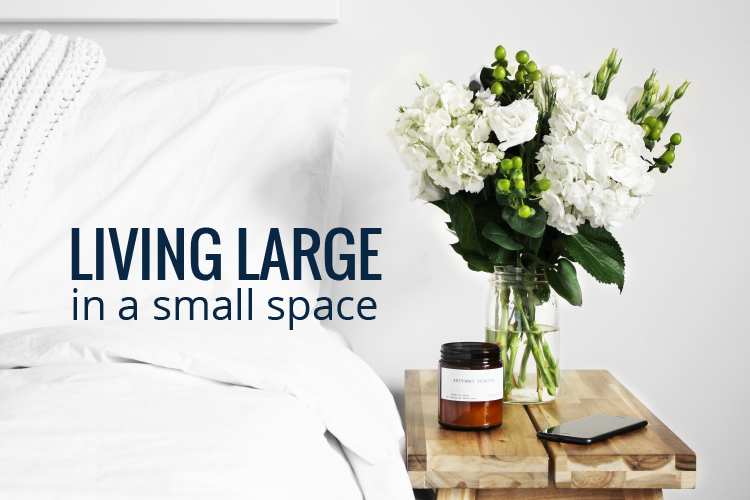Whether you rent or own, it’s likely your Toronto home doesn’t meet all of your storage needs. Here are few ingenious ways our clients have made the most of their small spaces.
Whether you’re renting or owning in Toronto, chances are you’re in a condo of modest proportions. We know that you want to make the most out of every inch and we definitely do our best to guide our clients towards condos with favourable layouts that will maximize each square foot they have. Whether your square feet are spread across a one room studio or divvied up amongst a few rooms, there are always clever ways to get the most out of your living space. We’ve sold hundreds of condos and have been privy to some pretty cool solutions, below we’ve put together some key tips to help you live large in small spaces.
CHECK OUT THIS STUDIO’S SMALL SPACE (VIEW THE LISTING)
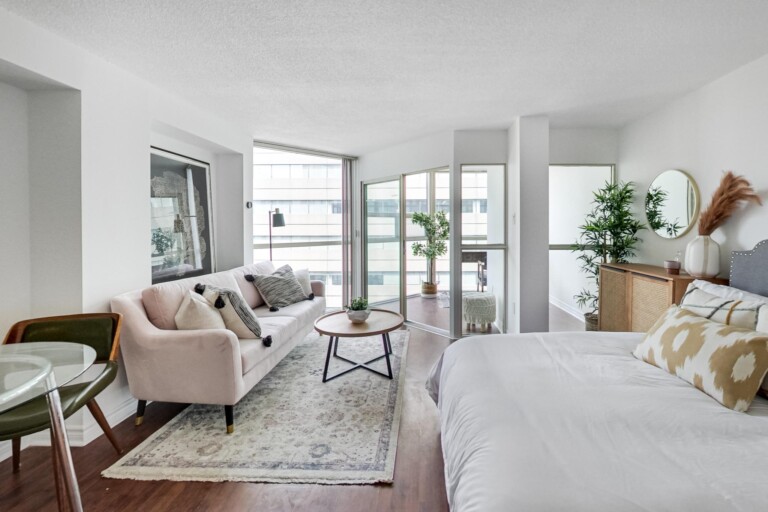
HIDDEN STORAGE
When you’re living in tight quarters, the number one issue always seems to be the lack of available storage space. When furnishing a small space you need furniture that offers hidden storage solutions beyond just their initial function.
The Swedes do it right, they’ve been making ottomans with storage for years. If you’re not interested in the IKEA route for your home there are more original ways to achieve similar storage solutions that also add character to the space. Old vintage trunks make great alternatives to coffee tables and night stands and can hold a lot too. Storage is, after all, their original purpose. You can likely find one at a garage sale, thrift store, or even check your grandparents’ basement.
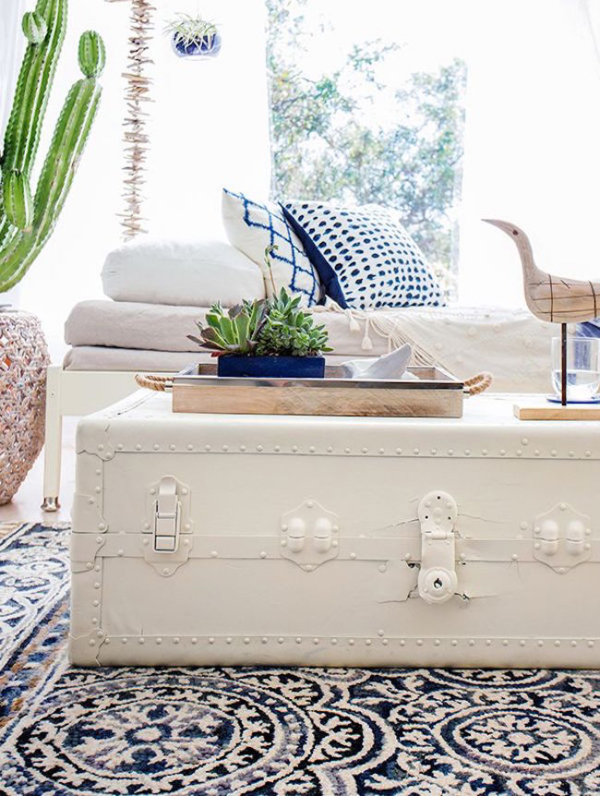
For a condo with a long and narrow entryway look for narrow benches that have storage inside. That way you’ve got a seat to put your shoes on and a place to tuck away clutter that will inevitably accumulate.
My go-to solution for hiding and storing all the random bits and bobs that accumulate, but don’t have a proper home, are decorative boxes. These can house anything from spare cables and batteries to nail polish and toiletries. The beauty of these is that you can find them in nearly every colour and you can incorporate them into the decor of any room. Nobody needs to know that that beautiful box on your bookshelf is full of tissue paper and gift tags.
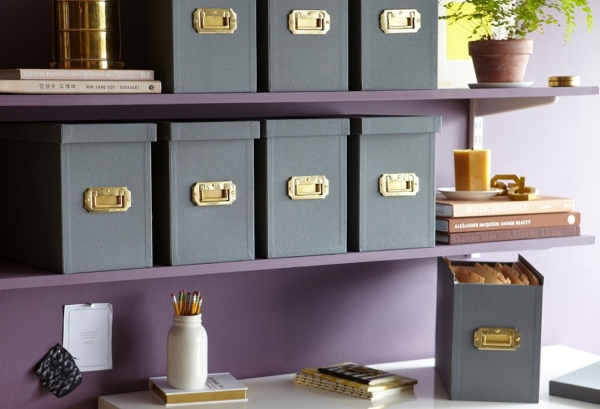
Another great way to maximize storage is to utilize the inside of cupboards and doors. There’s good real estate back there! Hang your brooms on the inside of a closet door or mount your spices to the inside of a cupboard for easy access.
Not that it needs to be said, but there is always lots of space under your bed for storage. There are plenty of ways to utilize this space without just shoving bins underneath. You can buy lift-and-store beds like these from Wayfair and IKEA. If that’s not in your budget, try stacking a few palettes and use the space to store your shoes and books.
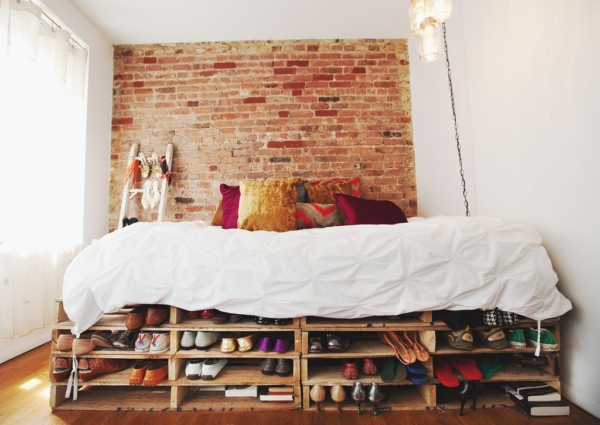
LET’S HANG
Condo kitchens can run small and if you like to cook, you need the utmost storage — especially if you’ve got kids. Opt to hang your pots and pans from the ceiling or along the wall instead of stacking them in the few cupboards you have. To avoid extra clutter on your counter, a magnetic knife rack like this one from IKEA is a great alternative to traditional knife blocks.
And what about that coffee mug collection? A great way to free up cupboard space is to hang your coffee mugs. Not only are they easily accessible when you stumble into the kitchen with sleep in your eyes, but they add some personality to your kitchen.
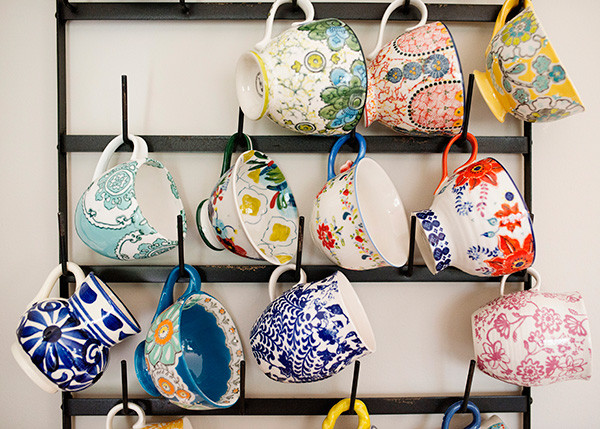
Not a lot of counter space in the bathroom? Mount a shallow shelf above your sink to house your toiletries keeping your counters clutter-free.
Plants are a great addition to any home. Not only do they add some much needed greenery, but they help purify the air. In a small space, the key to decor items, plants included, is to avoid over crowding. The goal is to have spaces feel open and airy. Hanging plants from the ceiling, especially in corners near windows or beside your bed is a great way to add life to your space without sacrificing surface area.

THE ILLUSIONIST
Your best weapon in a small space is the art of illusion. There are many ways you can trick the eye into thinking the space is bigger than it is. The oldest trick in the book is to use mirrors as a way of “doubling” the space. Try and opt for a large vertical mirror when possible, this not only adds depth to your space but it also adds height. Alternatively, look for a painting with receding subject matter or vast horizons. This simultaneously adds depth and art to your walls.

A big misconception is that in a small space you should have many small pieces of furniture to maintain proportions. WRONG! Invest in some key large pieces. Avoiding clutter applies to furniture too. Having a lot of small pieces occupying your small space makes the space feel busy. Less is more.
Avoid furniture that is heavy and clunky when possible. A glass coffee table or side tables with thin legs don’t appear to take up as much space, and allow the room to feel more open. Likewise, the colour you choose for the walls will affect how big it feels. Small rooms, especially those that maybe don’t get a lot of natural light, should have a lighter colour on the walls. Dark walls make spaces feel small. Selecting one colour throughout your home can also help it to feel more open and connected.
The way you arrange your furniture will help segment your space into different rooms. Place a shallow desk behind your couch to create an office area, or use a large bookcase at the right angle to create a bedroom if you’re in a studio apartment.
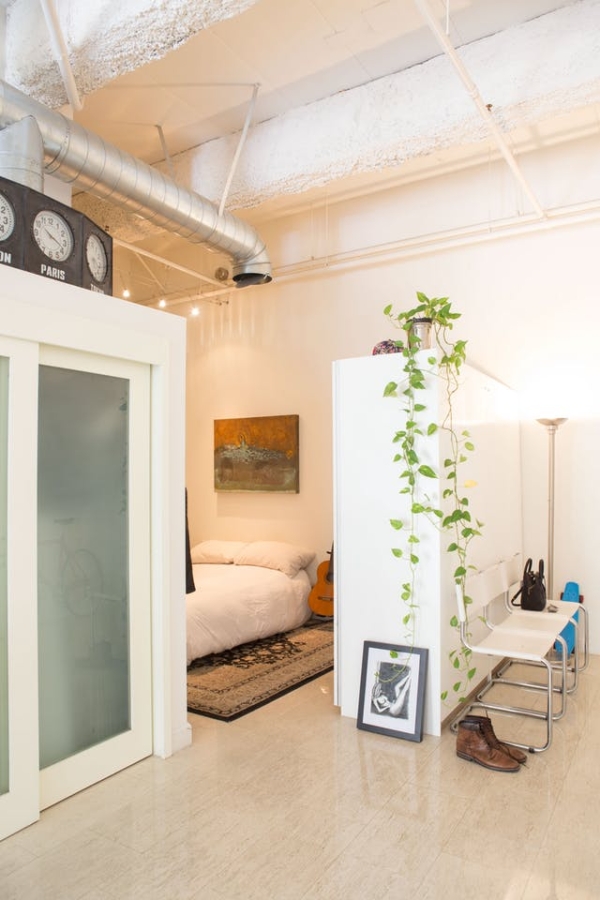
RULES TO LIVE BY IN A SMALL SPACE
- Arrange the space to meet your needs. If you always eat at the couch, don’t invest in a dining room if you’ll rarely use it. A drop-leaf table is a great option to have on hand but don’t invest money in areas you won’t use regularly. Or you can follow these tips to design a small dining space.
- Keep things clean. The thing with small spaces is that you can’t escape the mess. Avoid cluttering with unnecessary decor. As soon as you have lots of little things occupying your small space, the more crowded it will feel. Less is more.
- If you don’t use it—toss it. Really keep track of what you’re using and what you’re not. If you know you haven’t used something in 6 months or more, get rid of it. Same goes for your closet. At the end of every season, see which pieces you didn’t wear at all and donate them. A great way to not over-crowd your closet is for every new piece you add to your closet, choose one existing piece to give up.
- Look for furniture that is multi-functional or arrange your furniture in a way that works in more ways than one. Put your desk or dresser next to your bed to act as a bedside table. That’s one piece of furniture doing double-duty.


